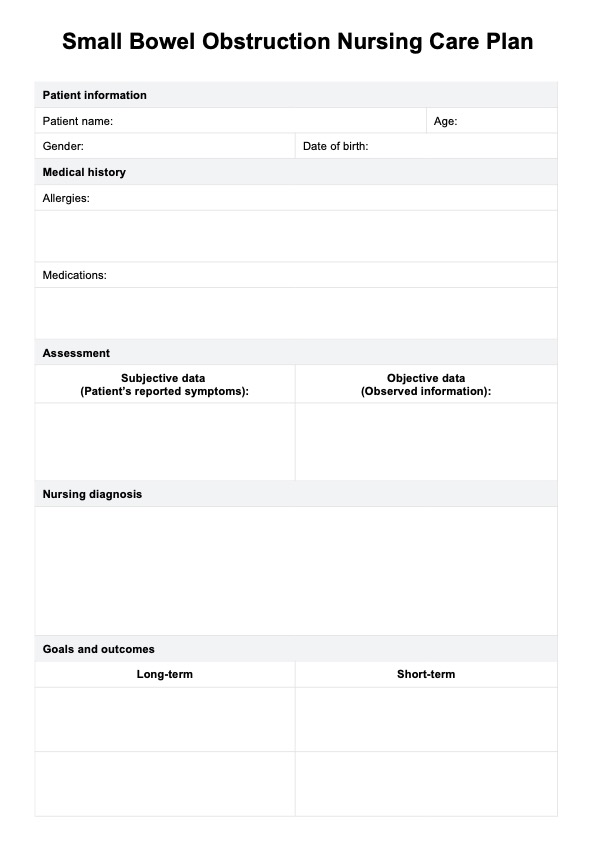In an acute care surgery setting, treatment focuses on reducing abdominal pressure and relieving the obstruction. This often involves administering intravenous fluids and electrolyte replacement to manage fluid balance. Surgical intervention may be necessary to address the small intestinal obstruction directly.

Small Bowel Obstruction Nursing Care Plan
Utilize this comprehensive guide and nursing plan template to create effective care plans and confidently deliver superior small bowel obstruction treatment.
Small Bowel Obstruction Nursing Care Plan Template
Commonly asked questions
Effective pain management for small bowel obstruction involves assessing the pain scale to determine severity and providing appropriate analgesics. In some cases, managing pain in adhesive small bowel obstruction may also require addressing the underlying cause of the obstruction to reduce abdominal pressure and discomfort.
Preventing complications involves early detection and treatment. Key practices include administering intravenous fluids to prevent dehydration, electrolyte replacement to balance vital nutrients, and using medications or interventions to relieve constipation and reduce symptoms. Regular monitoring and effective pain management are also crucial.
EHR and practice management software
Get started for free
*No credit card required
Free
$0/usd
Unlimited clients
Telehealth
1GB of storage
Client portal text
Automated billing and online payments











